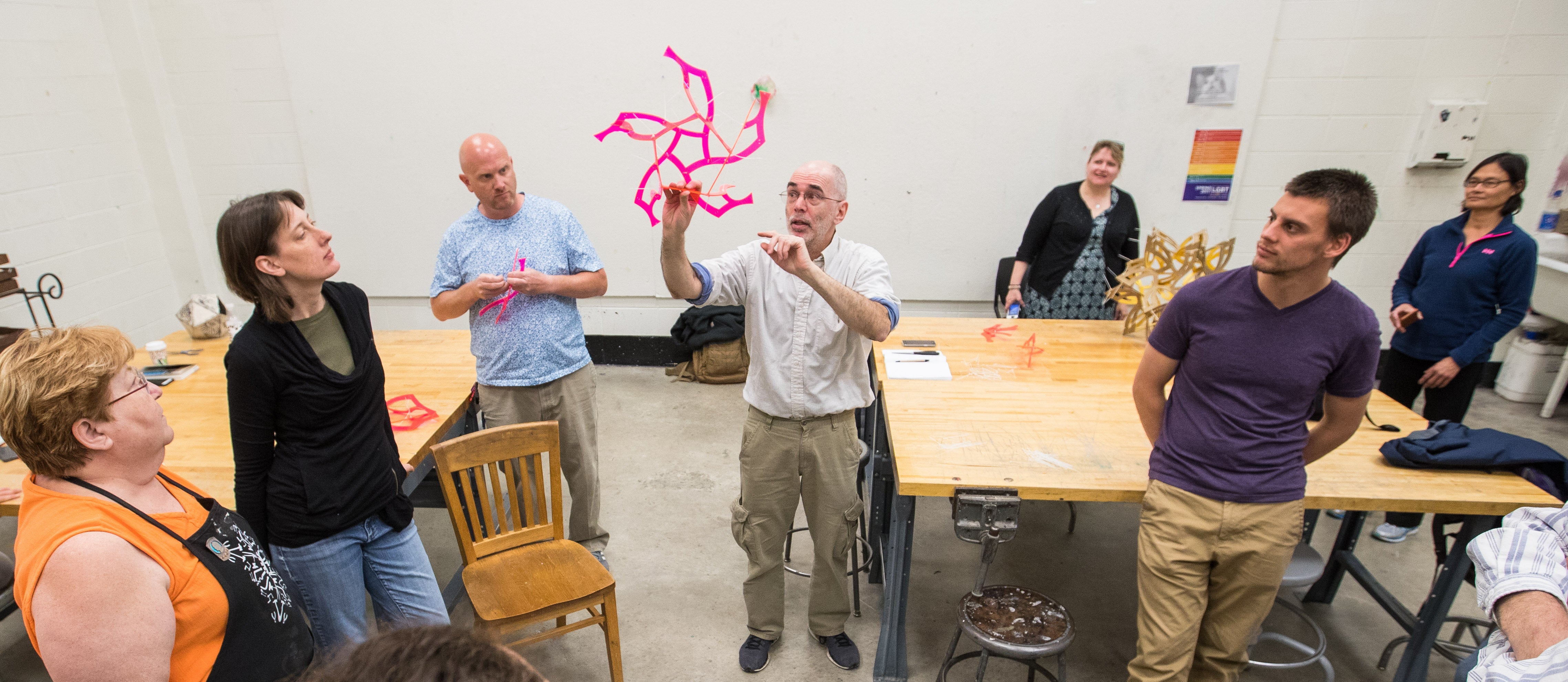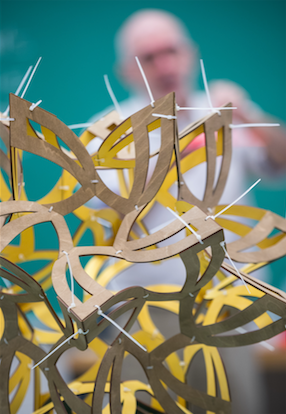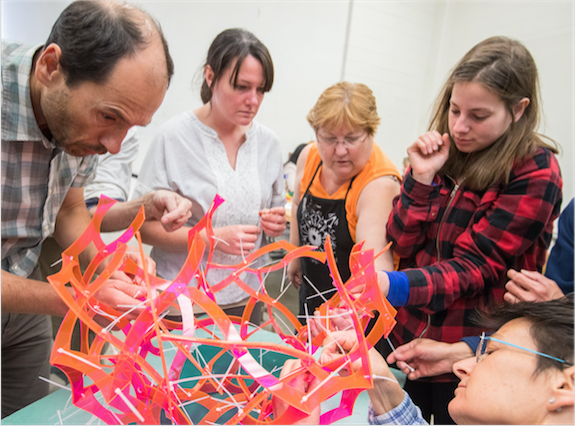Mathematical sculpture workshop spotlights the math behind art
Applied mathematician and sculptor Dr. George Hart led an April 7 workshop in Jenkins Fine Arts Center at East Carolina University which spotlighted the math behind art.
Hart, an interdepartmental research professor at the State University of New York at Stony Brook, demonstrated how mathematics is creative in unexpected ways.
Twenty-seven students, faculty and staff from across campus as well as teachers from the greater Greenville community assembled two of Hart’s sculptures and designed two of their own.
The event was organized by Dr. Sviatoslav Archava, teaching associate professor of mathematics at ECU.
Workshop participants started by connecting plastic struts and connector balls from a Zometool kit, forming shapes that would prove to be foundational for the sculptures that they would create.
The first sculpture, named “Autumn”, was assembled from 60 identical laser-cut wood pieces that were connected using cable ties. Working together, the participants explored the possible ways to connect the pieces, a task that developed spatial perception and visual reasoning. The solution for the sculpture involved two phases. The first phase was a finding a solution to connect three pieces. After that, it was possible to build the sculpture by combining the trio of connected pieces to other trios. Only one way to connect the pieces led to a beautiful structure they were trying to assemble. The following facts about the sculpture were noted by the participants with Hart’s help:
- “Autumn” may be viewed as an artistic version of a regular dodecahedron, a solid that is formed by 12 regular pentagons.
- Sixty pieces from which the sculpture is built lie in 30 planes (two in each plane). The 30 planes are the facial planes of the five cubes inscribed in the dodecahedron or, equivalently, of the rhombic tricontahedron.
The second sculpture, named “Ambagesque” (from the Latin word for “tangle”), also had 60 pieces, which were laser-cut from colored acrylic sheets. The pieces lie in 20 different planes (three in each plane). Despite the smaller number of planes involved, it was much more difficult to assemble due to the non- edge-to-edge connections and more complicated geometry. On a few occasions, participants needed Hart’s help to find the correct way to proceed.
Assembling the sculptures gave the participants a sense of the mental processes that mathematicians use in their research and the excitement and pleasure of “figuring things out.”
At the end of the workshop, participants designed their own paper sculpture. This involved changing the faces of the rhombic tricontahedron so the altered faces could be glued back together to create a visually appealing form.
Participants went away with an idea of the underlying shapes, the curiosity to look for patterns in complex-looking sculptures they may see elsewhere or design themselves, and having experienced the thrill of exploring the world around them mathematically.
For more information on Hart and his work, visit http://georgehart.com/.
-by Dr. Slava Archava, Teaching Associate Professor of Mathematics


